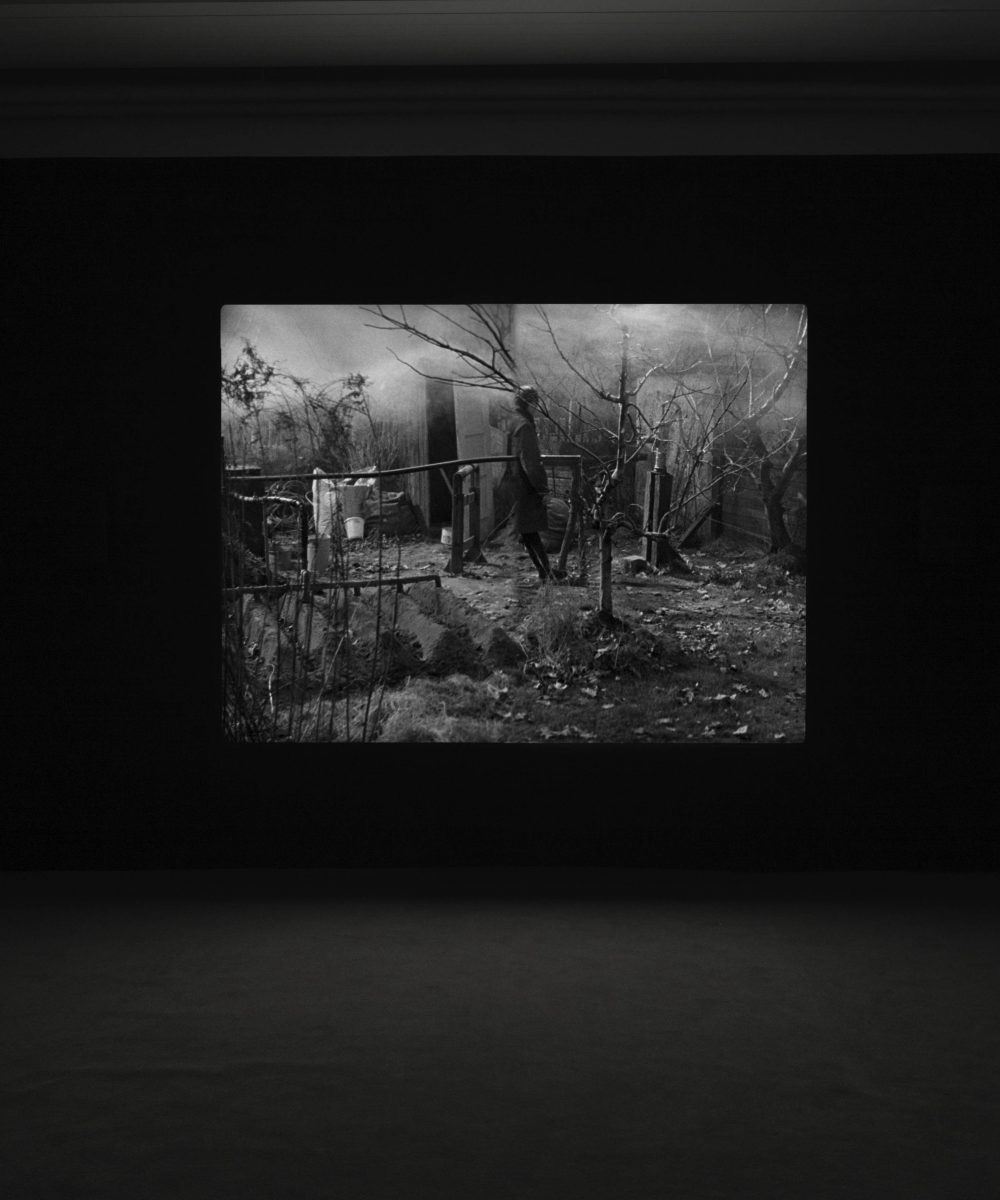Stan Douglas, Fruitmarket Gallery, Edinburgh, 7 November 2014 – 15 February 2015
Originally published at This is Tomorrow, 4 December 2014, installation view: Stan Douglas, The Fruitmarket Gallery, Edinburgh, 2014. Photos: Ruth Clark. All works courtesy the artist, David Zwirner New York/London, and Victoria Miro, London
The Fruitmarket Gallery presents Canadian artist Stan Douglas’ film, video and photographs examined through an episodic sequence of selected works. His “historical fictions” speculate on film noir, narrative and cinematic conventions.
Douglas’ works explore transitional time, genre time and measured time – the accuracy of the image to proclaim its era and origin, or conversely its imitation, and therefore the camera as a device to capture the past in the present. The works are an outside in/inside out archive of the surfaces, continuity and chronologies of classifiable time images.
Der Sandmann (1995) is displayed as a single screen of two films, a split screen rendition of the same film that is out of synch with itself by moments. The screen, in historical monochrome, retells through letter-form voiceover an E.T.A Hoffmann short story of the same name from 1816 – a mythological cautionary story of a beast that steals the eyes of sleepless children. Like the workings of the mind to repress difficult memories, the film is seen erasing itself. Its screen wipe is a blurred threshold between accurate recollection, perception and denial. The camera glides around a constructed set, a seamless rotation on a sound stage to outdoor scene. In its endless loop it sets the past in the present, and its immediate present is immediately wiped away.
Classic images of the prohibition era – contraband, a cigarette and alcohol stash, arrested suspects, a clown juggling suspension – are displayed in Midcentury Studio (2010-2011). This series emulates the style of press and commercial photography, tabloid headlines and true-life crime scenes, paying homage to Raymond Munro and Arthur Fellig, known as Weegee. The series displays its understanding of the age they imitate, their ‘period piece’ precision of replication: clothes, hairstyles, products and interior decorations, while employing analogous photographic print and processing techniques. They are a remarkable examination of replication and authenticity, an era that gave rise to photojournalism and the documentary image while signalling an enduring correspondence to the alluring and seedy worlds of criminality, celebrity and the newsworthy.
Malabar People (2011) is a studio portrait series of the clientele and staff of a semi-fictional bar from Vancouver in the 1950s. Its ethnically and socially diverse personae are the cab driver, a faded socialite, a goodtime girl, a camp impresario (a female impersonator), a droll male patron and a bartender and proprietor. These characters imply their possible narratives, social status and interactions, imbued with nostalgia, like apparitions from the past casting long shadows into the present they bring to mind Woody Allen’s Radio Days, and its recollections of high class society at the edge of war, Stanley Kubrick’s The Shining, where past and present intermingle abruptly, and Catherine Sullivan’s The Chittendens, where characters trapped in fabricated narratives evidence the validity of their identities through the performative: gesture, styling and costume.
Vidéo (2007) is a high definition video counterfeit silent film noir. Its staging channels the cinema and TV of the 1960s and 1950s seeping into the present day. It references Orson Welles’ film of Franz Kafka’s The Trial and Samuel Beckett’s Film (1965). Different cameras, surveillance and stedicam place the action and speculate on its narrative in a housing estate, waste ground, administration building and lecture theatre. Its cast are mid-century gangsters, hoodlums from Eastern Europe, a cigarette smoking secret agent and an unidentified woman. Its part-paranoia part-espionage plot revolves around the retrieval of a binder of files about a lost identity. In its denouement, the binder is found and its contents destroyed, an act that cues its beginning, setting in motion a perpetual loop of consequences leading to the same inevitable outcome. This elliptical mirroring permeates Douglas’ optics frequenting all these images and films: detailed and meticulous in their historical accuracy and authority yet unsettled in their corrupting of that authority while bringing to the foreground eternal misdirection, mistaken identities and false memories.
With additional thanks to Susan Gladwin and Louise Warmington at Fruitmarket Gallery
